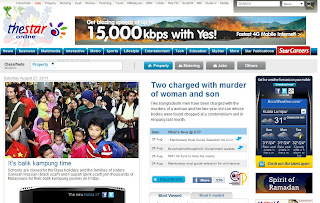According to Walsh (2006), there is a great
possibility of screen documents in combining words and images in a complex
structure.
However, readers are rather complex to jot down important
points in notes with print documents. ‘Readers thus perceive, consciously
or otherwise, the non-linear, spatial structure of the page, and are involved
in the active, 'linear' process of traversing that structure, of “navigation”
‘(Kress& Leeuwan 1998).
The pictures below are the examples of magazines page and website images:
Print document:
Screen document:
Fundamentally,
Neilsen (1999) claimed that there are three main considerations of differences
on designing screen and print documents involving layouts and written structure
such as:
Fundamentally, relating to examples provided above, there are three main considerations of differences on designing screen and print documents (Neilsen 1999) involving layouts and written structure, which are:
1. Main structure
Print document consists of high impact graphics. Yet, user engagement of screen document is not intrude into design element. In contrast, screen document is achieving a current level of interactivity.
3. Navigation
Leaf through the page is the only navigation for print documents nowadays. However, screen documents come with hypertext navigation which mixed with information architectures and visualization. So, it can attract finer impressions of the users.
In conclusion, readers are still reading both types of reading designs today. Despite that, screen designed documents presumed as the best choice because it fits the media technology by providing convenience and information to the readers.
References:
Walsh, M 2006, ‘The Textual Shift: Examining the reading process with print, visual and multimodal texts,’ Australian Journal of Language and Literacy, vol.29, no.1, pp. 24-37.


